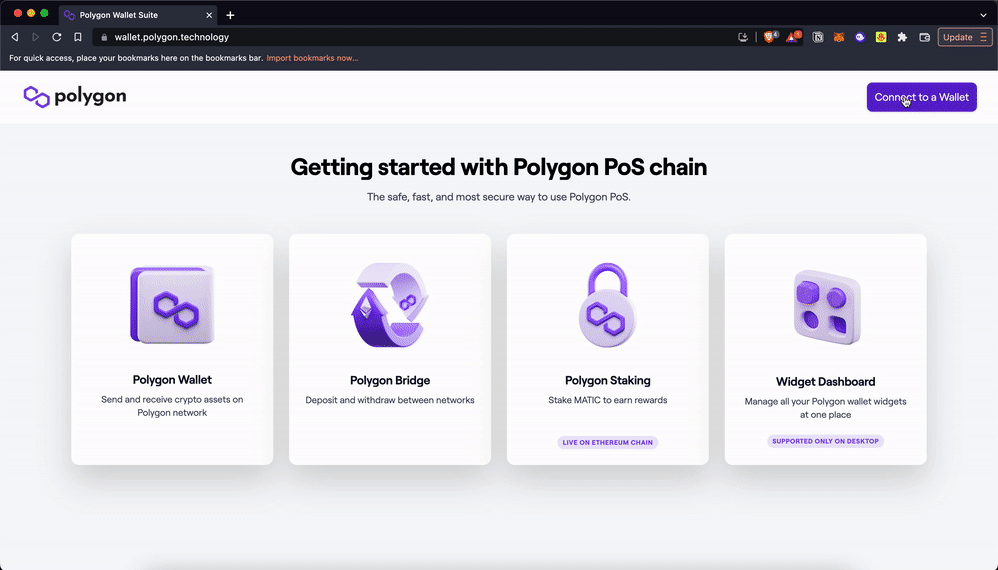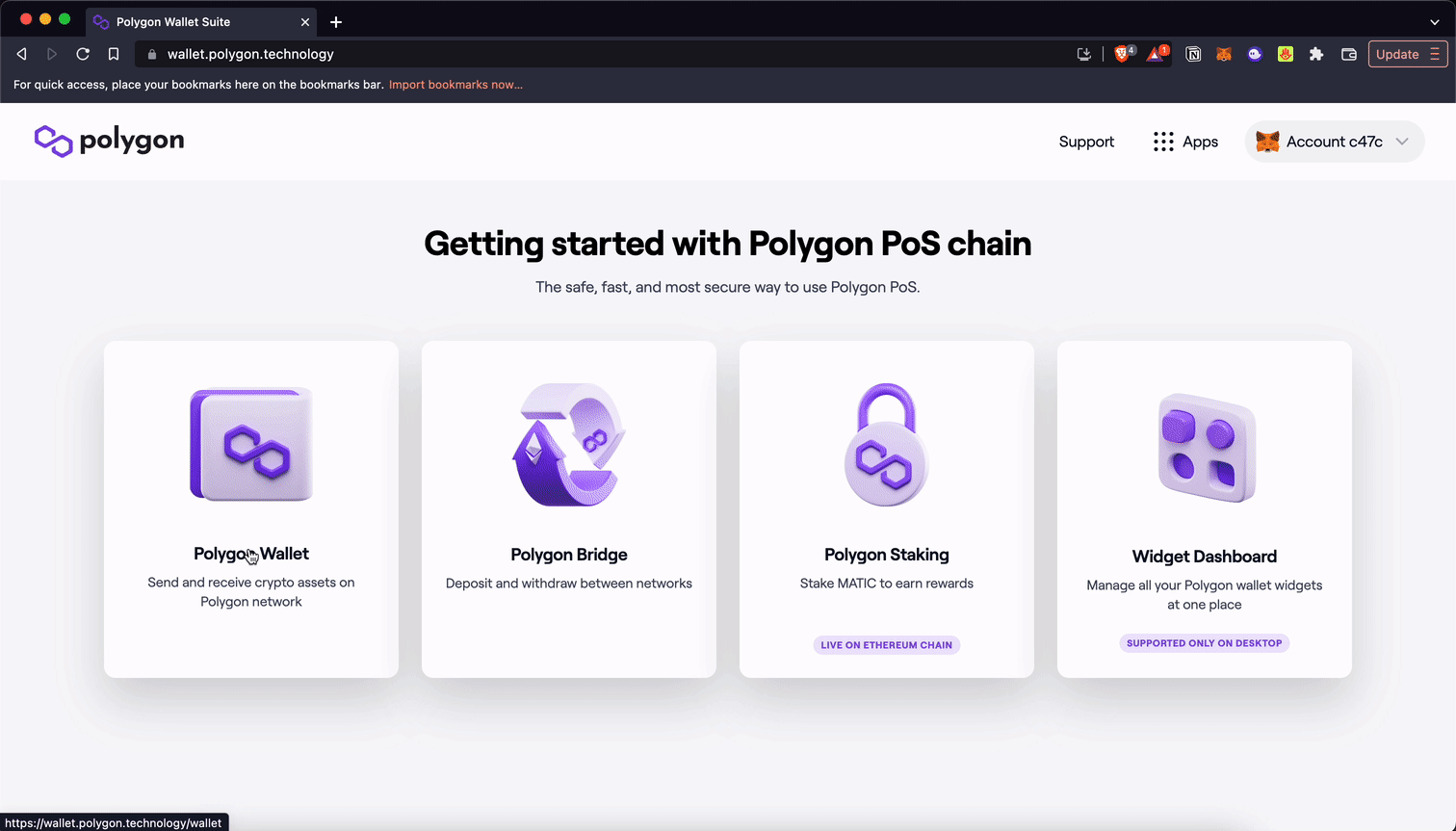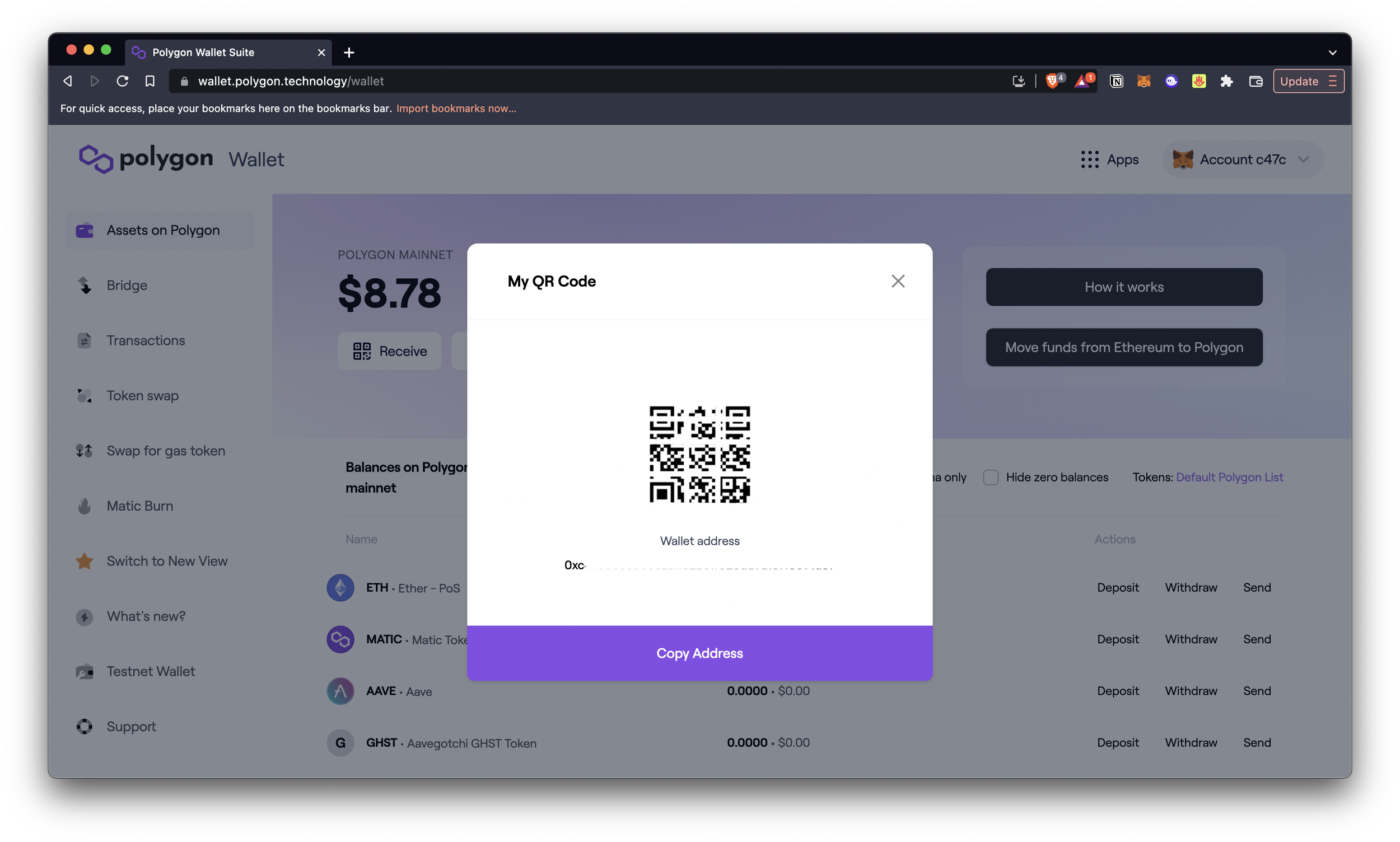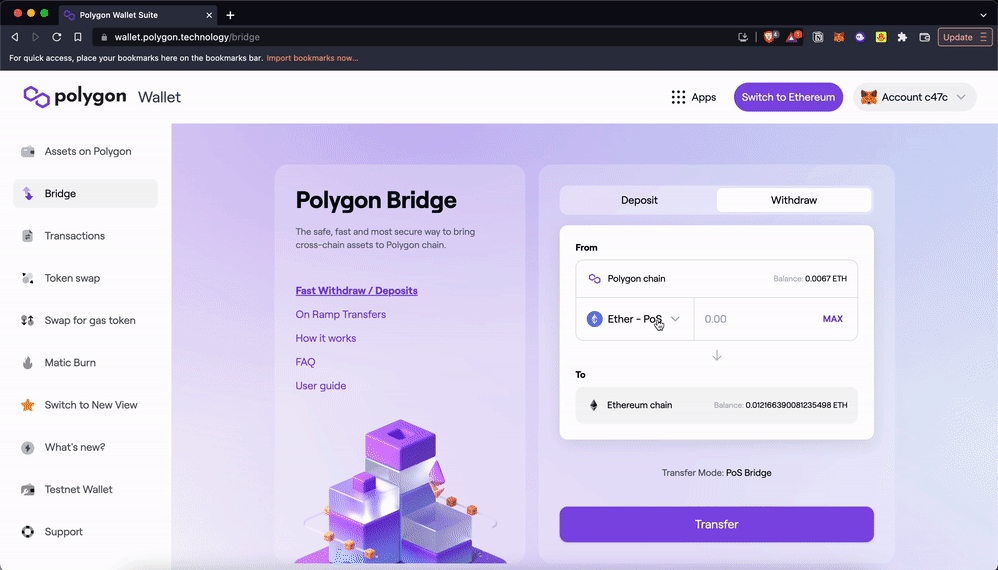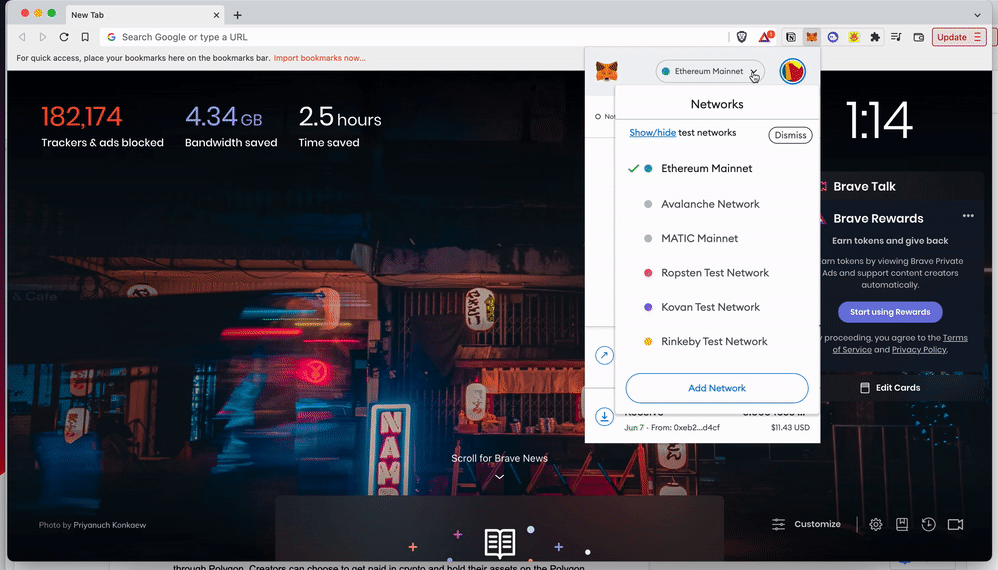Scaling Ethereum: A Guide to the Polygon Network
Decentralization and security are critical to blockchains. However, for blockchain technology to reach global adoption, it must also be scalable and accessible to everyone.
The cost of interacting with decentralized apps, DeFi protocols, NFT marketplaces, and games on Layer 1 blockchains such as Ethereum can at times be too high, due to the large demand on the network.
A number of solutions have been developed to solve the scalability problem Layer 1 blockchains face. Scaling solutions include validiums, sidechains, and different types of Layer 2s such as rollups, state channels, and plasmas. To learn more about how Layer 2 solutions on Ethereum work, read our blog post here.
In this article, we learn about Polygon and show you how to manage crypto assets on the Polygon network.
What Is Polygon?
Polygon’s proof of stake sidechain runs in parallel to the Ethereum blockchain. You can think of a sidechain as a copy of its parent blockchain, except it utilizes a different consensus mechanism to process transactions and lower transaction fees.
A sidechain works by connecting to its parent blockchain through a two-way bridge. Assets on the Ethereum network can easily be bridged and used on the Polygon network and vice versa.
The benefits of using a sidechain include significantly lower transaction fees and fast transaction speeds. Users still have access to a variety of decentralized apps and protocols that are integrated with the Ethereum network.
The Polygon network includes an ecosystem of scaling solutions aside from its POS sidechain. These scaling solutions include plasma chains for security, ZK rollups, and optimistic rollups.
As compared to Layer 2 solutions, sidechains do not share the same security properties as the Layer 1 blockchain. Instead, Polygon utilizes a decentralized network of proof of stake validators and the Plasma bridging framework to secure its network.
Polygon’s native token MATIC
To transact on the Polyon network, you will need Polygon’s native token MATIC to pay transaction fees. Transaction fees on Polygon cost an average of $0.002 per transaction, which means having at least $1 of MATIC in your Polygon wallet can go a long way.
MATIC is also used as a governance and staking token to secure the network. MATIC is available on cryptocurrency exchanges such as Coinbase, Binance, Crypto.com, Kraken, and decentralized exchanges such as Uniswap and Sushiswap.
Exploring the Polygon Network
There are thousands of dApps on the Polygon network ranging from DeFi protocols, games, DAOs, NFT marketplaces, and much more.
Explore NFT marketplaces such as Mintable, decentralized social networks such as Lens Protocol and Showtime, and DeFi apps such as Sushiswap and AAVE. View a complete list of dApps on the Polygon network here.
If you already have an Ethereum wallet, connecting to dApps on Polygon is quick and easy. All you need to do is connect your wallet to dApps and hold MATIC tokens.
Managing Assets on the Polygon Network
Learn how to send, receive, and bridge your Polygon assets on the Polygon Wallet Suite, a non-custodial wallet for managing your assets.
When sending and receiving crypto assets on Polygon, make sure that you are transacting on the Polygon network. If you would like to send Polygon assets to the Ethereum network, use the Polygon bridge so as not to lose your funds. If you are uncertain about the transaction, send a small test amount before proceeding with the entire amount.
Since dApps built on Polygon are compatible with Ethereum, your wallet address on the Polygon network is the same as your wallet address on the Ethereum network.
1. Visit Polygon Wallet Suite and connect your Ethereum Wallet.
2. Select Polygon Wallet to send or receive crypto assets within the Polygon network.
When sending Polygon assets to a cryptocurrency exchange address, make sure that the cryptocurrency exchange supports Polygon and not just Ethereum. Sending Polygon assets to exchanges or wallets that only support Ethereum can result in a loss of funds. View a list of supported cryptocurrency exchanges here.
3. To send crypto assets within the Polygon network, enter the wallet address of the recipient. The recipient should also have a presence on the Polygon network, otherwise use the Polygon Bridge to transfer your assets to the Ethereum network before sending the crypto assets.
Once you have entered the wallet address, choose the asset you will be sending, and enter the amount. Confirm your transaction to proceed.
4. To receive crypto assets within the Polygon network, provide your wallet address to the sender or present the QR code available through the Polygon Wallet.
5. To bridge crypto assets from the Ethereum network to the Polygon network select the Polygon Bridge and choose “Deposit”. Enter the amount of ether you would like to bridge and review the transaction and fees to proceed. Bridging assets from Ethereum to Polygon will take about 22-30 minutes.
6. To bridge crypto assets from the Polygon network to the Ethereum network, select “Withdraw” from the Polygon Bridge. Enter the amount you would like to bridge and review the transaction. This transaction could take 45 minutes to 3 hours to complete, since the bridge is secured by POS validators.
7. Another way to view your Polygon assets is through your Metamask wallet. From the Metamask wallet browser extension, change the network from Ethereum Mainnet to MATIC Mainnet.
8. If you have pending transactions on the Polygon network and want to view them, visit Polygonscan and enter your wallet address.
Bringing Crypto Mainstream
In recent months, traditional companies have chosen Polygon to launch and integrate new Web3 features.
Social media network Instagram recently launched NFTs on their platform, introducing digital collectibles to millions of users. NFTs on Instagram are powered by Polygon, where users have to connect their Ethereum wallets to view and share NFTs they have created or collected.
Stripe, a payment processing platform, launched global crypto payouts available on Twitter through Polygon. Creators can choose to get paid in crypto and hold their assets on the Polygon network or bridge those assets to Ethereum.
With the speed of transactions on Polygon, affordable transaction fees, and compatibility with the Ethereum network, it’s no surprise that mainstream companies are choosing Polygon to help bring crypto to the next million users.
Scaling the Future
Scalability solutions play a crucial role in accelerating the adoption of Web3. Polygon’s ecosystem of scalability solutions makes the Ethereum network and blockchain technology accessible to millions of people around the world.
Although Ethereum has recently transitioned to a proof of stake blockchain from proof of work, Layer 2s and sidechains are still necessary as the number of crypto users continues to grow. Improvements on the main Ethereum blockchain result in more efficient Layer 2 scalability solutions.
So, what do you think of the Polygon network? If you’ve interacted with any dApps on Polygon, chat with us and share your experience on the Surge Discord.
Stay tuned for more educational Web3 content by signing up for our newsletter below.

